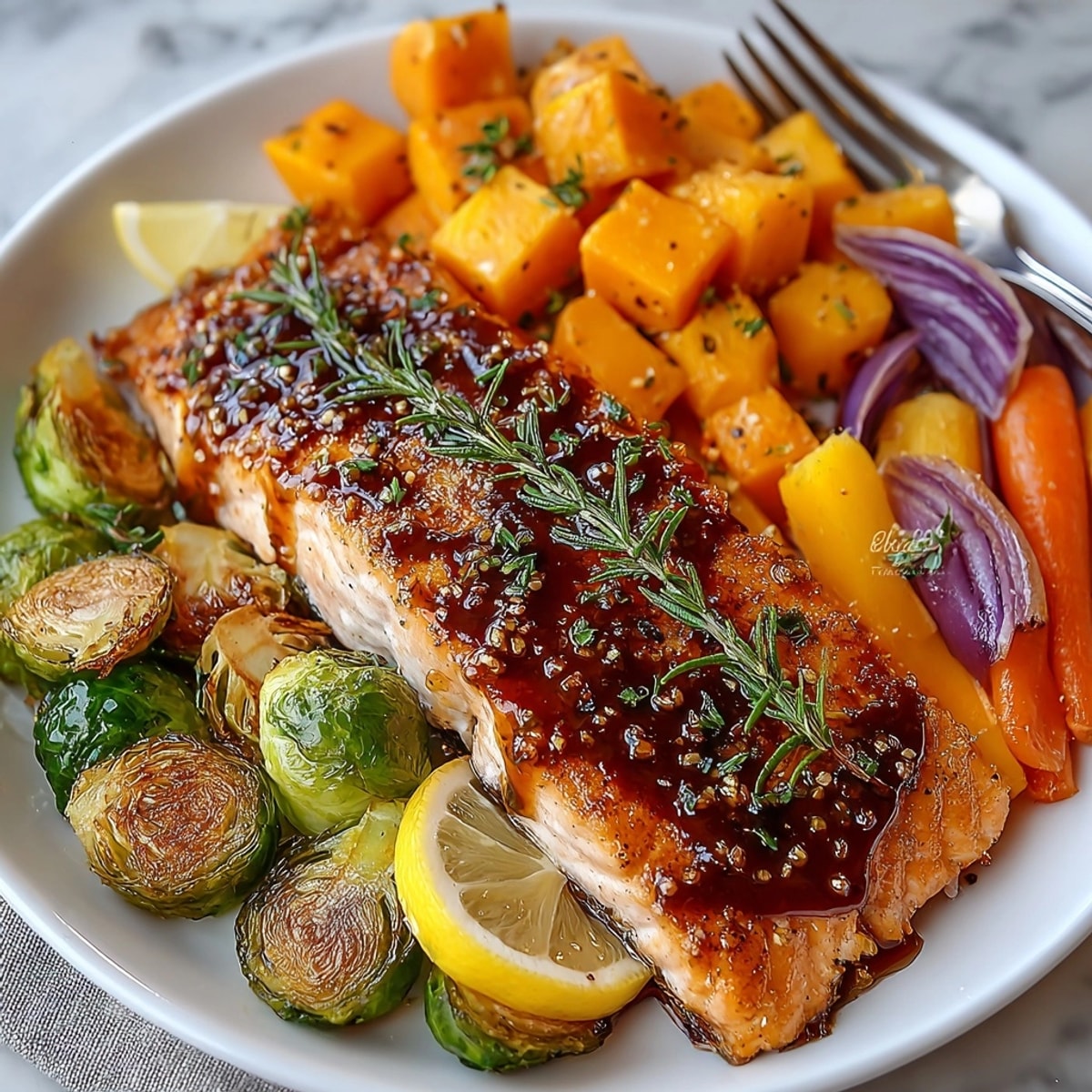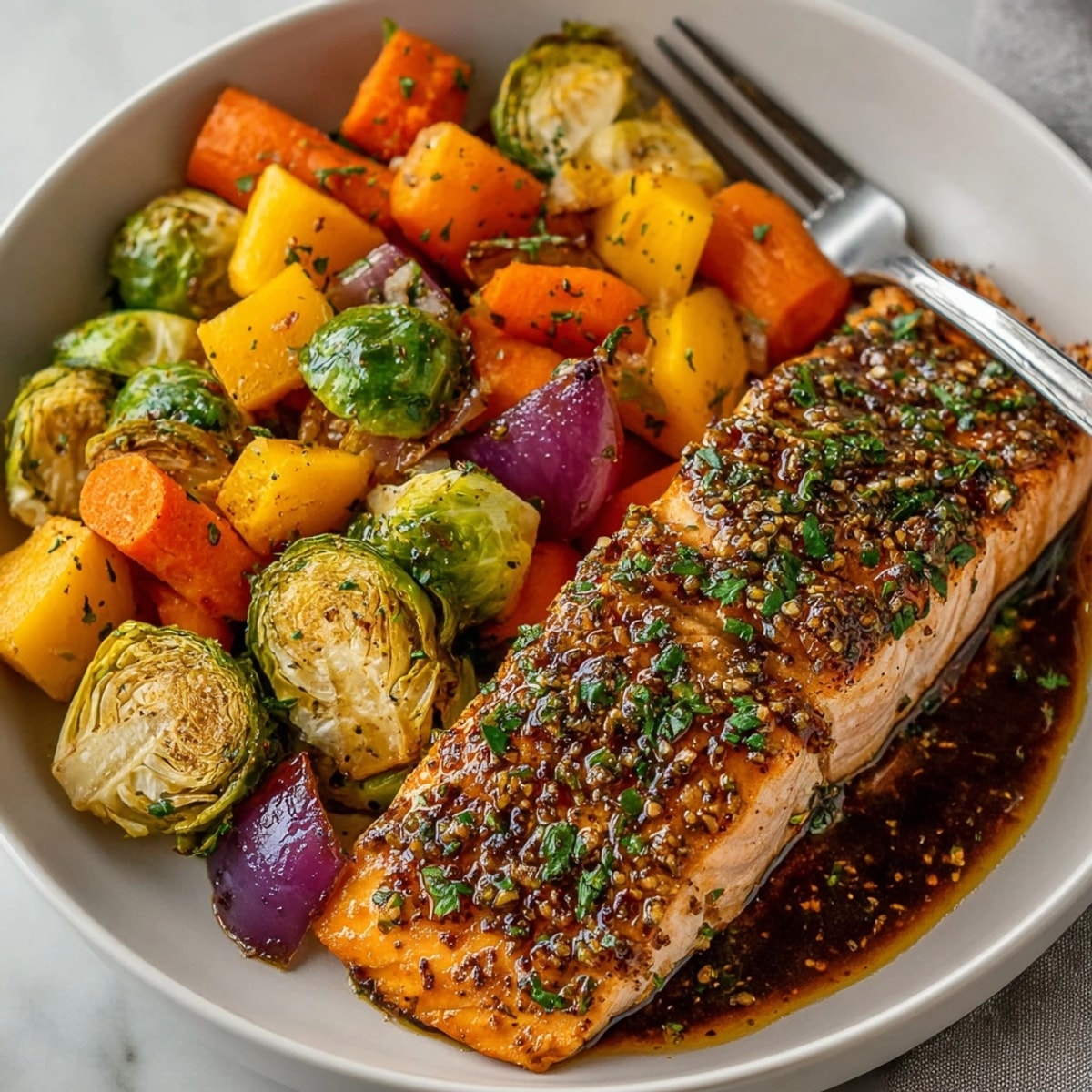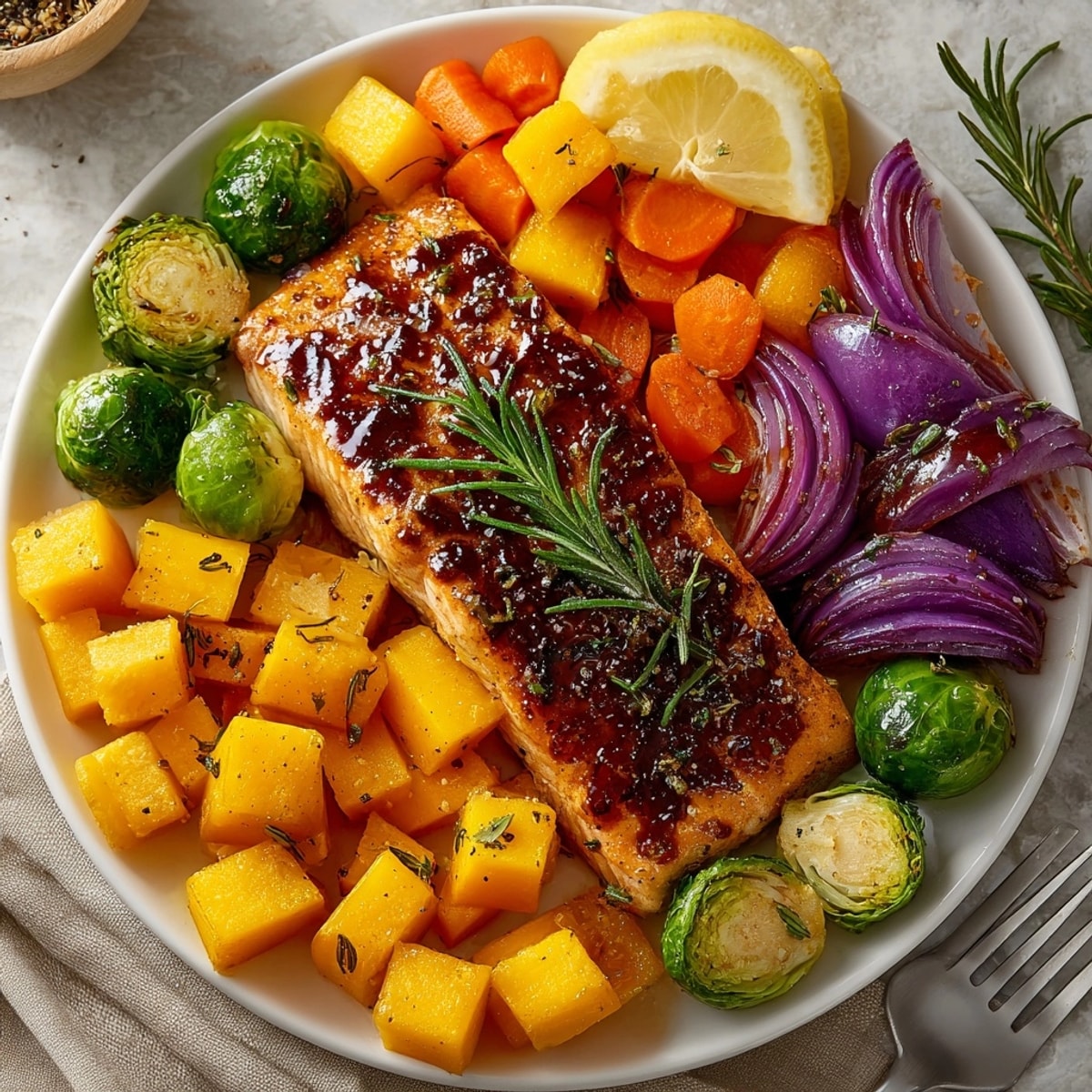 Save to Pinterest
Save to Pinterest This sheet pan honey garlic salmon with winter vegetables delivers a hands-off dinner that is both festive and full of flavor. Each fillet bakes to buttery tenderness, glazed in a sweet-savory sauce, surrounded by a rainbow of winter veggies. It is my go-to when I crave something easy after a long day but want everyone at the table to feel special.
I stumbled on this recipe during a busy winter week when I tossed together odds and ends from the fridge. Now it is my secret weapon for cozy nights with family and low-stress dinner parties alike.
Ingredients
- Salmon fillets: provide heart-healthy fats and protein Choose the freshest you can find with firm flesh and silvery skin
- Olive oil: helps with browning and keeps the salmon moist Opt for extra virgin for best flavor
- Salt and pepper: awaken all the other flavors Use kosher salt and freshly cracked pepper for a tastier finish
- Honey: brings sweetness and beautiful caramelization Use good local honey if possible
- Low-sodium soy sauce or tamari: adds umami Look for brands with no artificial preservatives
- Fresh garlic: offers sharp aroma and richness Pick plump cloves with tight skin
- Fresh lemon juice: brightens everything Use ripe lemons and avoid bottled juice
- Dijon mustard: adds a gentle tang Seek out a smooth creamy variety
- Brussels sprouts: deliver crunch and a nutty note Look for tight green heads
- Butternut squash: adds sweetness and color Choose heavy squash with a firm matte skin
- Red onion: gives subtle sharpness Select a firm onion with no soft spots
- Carrots: offer earthiness and natural sugars Pick medium carrots with deep orange color
- Dried thyme: infuses herby flavor Use a fresh jar for maximum aroma
- Dried rosemary: provides piney warmth Break the leaves in your hand to release their oils
- Fresh herbs or lemon wedges (optional): add sparkle and freshness to garnish
Instructions
- Preheat the Oven:
- Set your oven to 425 degrees Fahrenheit or 220 degrees Celsius This high heat helps the vegetables get golden and the salmon glaze to caramelize
- Prepare the Vegetables:
- In a large bowl combine Brussels sprouts butternut squash red onion and carrots Drizzle with olive oil and sprinkle with thyme rosemary salt and pepper Toss until all the vegetables are evenly coated Spread them in a single layer on your sheet pan leaving space in the center
- Mix the Glaze:
- In a small bowl whisk together the honey soy sauce or tamari minced garlic lemon juice and Dijon mustard Keep whisking until the mixture looks smooth and glossy
- Prep the Salmon:
- Pat the salmon fillets dry with paper towels Rub each fillet with olive oil and season both sides with salt and pepper Arrange them skin-side down in the center of the pan between the veggies
- Glaze the Salmon:
- Use a spoon or brush to cover the tops of the salmon with half the prepared glaze Set the rest aside for later
- First Roast:
- Put the pan in the hot oven and roast for 15 minutes This step begins to caramelize the glaze and tenderize the vegetables
- Glaze Again and Toss:
- Take the pan out Carefully brush the salmon with the remaining glaze and gently toss the vegetables to encourage even browning
- Finish Roasting:
- Return everything to the oven and roast for 8 to 10 more minutes Check for doneness The salmon should flake easily and reach an internal temperature of 145 degrees Fahrenheit or 63 degrees Celsius The vegetables should look golden and tender
- Serve:
- Lift the salmon onto plates Add a generous helping of vegetables alongside Garnish with chopped herbs or lemon wedges for a burst of color and flavor
 Save to Pinterest
Save to Pinterest Butternut squash was always the winter treat in my childhood kitchen so I look for any excuse to fold it into dinner My family loves how its natural sweetness works with the punchy garlic glaze and I love how everyone polishes off their veggies without a fuss
Storage Tips
Leftovers keep in an airtight container in the fridge for up to three days To reheat arrange leftovers on a baking sheet and warm in a low oven so the salmon stays moist This sheet pan dinner is great for meal prep Simply divide between containers for easy lunches during the week
Ingredient Substitutions
Try sweet potatoes or parsnips in place of butternut squash for a new twist Swap Brussels sprouts for broccoli florets if preferred Use maple syrup in place of honey if you like a woodsy sweetness If fresh salmon is not available frozen fillets work too Just thaw them well and pat dry
Serving Suggestions
Garnish with fresh dill parsley or a sprinkle of pomegranate arils for a festive touch Serve alongside quinoa rice or crusty bread for a heartier meal Top with toasted nuts or seeds for extra crunch and nutrition This dish shines with a crisp green salad dressed in citrus vinaigrette
Cultural and Seasonal Notes
Sheet pan meals have become popular in many cuisines for their practicality and vibrant presentation This recipe embraces winter flavors with hardy vegetables and a glaze that feels both comforting and fresh It makes a showstopper main for holidays or Sunday dinners but is easy enough for any weeknight
 Save to Pinterest
Save to Pinterest Give this festive dinner a try for your next cozy night in With minimal prep and mouthwatering results it is bound to become a family favorite
Common Recipe Questions
- → How do I keep salmon fillets moist when roasting?
Pat fillets dry, brush with olive oil and glaze, and avoid overcooking. Bake until just cooked through for tender results.
- → Can other vegetables be used instead of butternut squash?
Yes, you can substitute with sweet potatoes, parsnips, or your favorite root vegetables for a similar texture and flavor.
- → Is this dish suitable for gluten-free diets?
Absolutely; simply use tamari instead of soy sauce to keep the dish entirely gluten-free.
- → What wine pairs well with this meal?
A crisp, dry white wine such as Sauvignon Blanc complements both the salmon and the sweet honey glaze.
- → How can I add extra flavor or spice?
Try sprinkling chili flakes over the vegetables before roasting or finish with fresh herbs and lemon wedges.
- → What is the best way to tell when the salmon is done?
The salmon should flake easily with a fork and reach an internal temperature of 145°F (63°C).